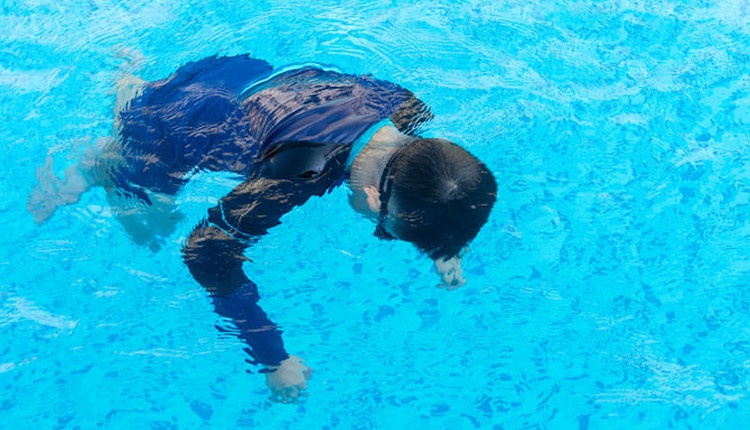
Water rescue: drowning first aid, diving injuries
Drowning occurs when the patient’s airway is filled with water, preventing air from passing into the lungs. Drowning may not end in death if the water is removed and respiration is restored in a timely manner
A submersion incident can result in nothing more than a cough; more serious injuries can present with vomiting, difficulty breathing, respiratory arrest, and cardiac arrest.
If a patient is still in the water on arrival, remember that your first priority is your personal safety and the safety of your crew.
Look for dangerous situations that may have lead to the patient drowning in the first place.
Assessing the quality of the water and the container it is in will clue you in to most potential hazards.
Drowning, the recommended water rescue model:
Reach- if the victim is close enough to shore. You can use an oar, pole, branch, or another rescue device if you can’t reach them with your hand.
Throw- a flotation device attached to a rope so the victim can be pulled to shore.
Row- if the previous methods are unsuccessful or the pt is unconscious, trained rescuers should row out to the pt if a boat is available.
Go- if a boat is unavailable and the reach and throw methods don’t work, trained rescuers should go to the pt by wading or swimming.
Management of a drowning patient
The management of a drowning patient is focused around assessing for any co-dominant injury, controlling the ABC’s, and preventing further complications.
If the patient is still in the water and you suspect a spinal injury, manually stabilize the neck and spine.
If the patient is adequately breathing on his/her own, place him/her in the recovery position, and administer oxygen.
Use a backboard to roll the victim partially on his/her side so that aspiration can be avoided if the patient vomits; use suctioning as necessary to clear any visible fluids from the airway.
If an AED is available, it is safe to discharge the unit if indicated as long as the patient is not in standing water.
New AHA guidelines advise starting chest compressions and rescue breaths in a 30:2 ratio at a rate of at least 100 compressions/min regardless of respiratory status, According to the AHA;
“As soon as the unresponsive victim is removed from the water, the rescuer should open the airway, check for breathing, and if there is no breathing, give 2 rescue breaths that make the chest rise (if this was not done previously in the water). After delivery of 2 effective breaths, if a pulse is not definitely felt, the healthcare provider should begin chest compressions and provide cycles of compressions and ventilation according to the BLS guidelines.”
THE RADIO OF THE WORLD’S RESCUERS? VISIT THE RADIO EMS BOOTH AT EMERGENCY EXPO
Drowning, special aquatic considerations
Beyond drowning, exposure to aquatic environments can result in health conditions that are not seen elsewhere; the most tested of these are decompression sickness, nitrogen narcosis, and “squeeze” injuries.
Decompression sickness “The Bends” occurs when a SCUBA diver descends to a significant depth and is forced to surface without appropriate decompression stops to allow for nitrogen that dissolves in the blood under high pressure to naturally and slowly percolate out of the blood.
This results in gas bubbles forming in the circulation and joints causing incredibly painful arthralgia and potentially life-threatening respiratory distress.
Nitrogen narcosis
Results from a mix of gas in air tanks that has a high percentage of nitrogen. The symptoms of nitrogen narcosis are largely identical to alcohol intoxication. The management of this condition is limited to the application of oxygen and ruling out the presence of decompression sickness.
Squeeze injuries occur when pressure is placed on the face by a diving mask due to failure to exhale through the nose while diving, causing significant pressure to be placed on the eyes, sinuses, and facial bones. This can result in nosebleed, eye injury, or sinus damage.
Read Also:
Emergency Live Even More…Live: Download The New Free App Of Your Newspaper For IOS And Android
Drowning Resuscitation For Surfers
ERC 2018 – Nefeli Saves Lives In Greece
First Aid In Drowning Children, New Intervention Modality Suggestion
Water Rescue Dogs: How Are They Trained?
Drowning Prevention And Water Rescue: The Rip Current
RLSS UK Deploys Innovative Technologies And The Use Of Drones To Support Water Rescues / VIDEO
Summer And High Temperatures: Dehydration In Paramedics And First Responders
First Aid: Initial And Hospital Treatment Of Drowning Victims
First Aid For Dehydration: Knowing How To Respond To A Situation Not Necessarily Related To The Heat
Children At Risk Of Heat-Related Illnesses In Hot Weather: Here’s What To Do
Summer Heat And Thrombosis: Risks And Prevention
Dry And Secondary Drowning: Meaning, Symptoms And Prevention
Drowning In Salt Water Or Swimming Pool: Treatment And First Aid
Water Rescue: Drone Saves 14-Year-Old Boy From Drowning In Valencia, Spain



